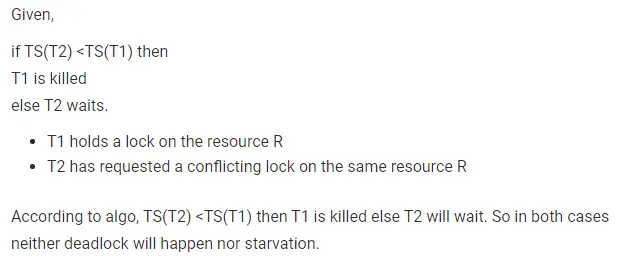Q. 46 In a database system, unique time stamps are assigned to each transaction using Lamport’s logical clock. Let TS(T1) and TS(T2) be the time stamps of transactions T1 and T2 respectively. Besides, T1 holds a lock on the resource R, and T2 has requested a conflicting lock on the same resource R. The following algorithm is used to prevent deadlocks in the database assuming that a killed transaction is restarted with the same timestamp.
if TS(T2) <TS(T1) then
T1 is killed
else T2 waits.
Assume any transactions that is not killed terminates eventually. Which of the following is TRUE about the database system that uses the above algorithm to prevent deadlocks?
(A) The database system is both deadlock-free and starvation- free.
(B) The database system is deadlock- free, but not starvation-free.
(C) The database system is starvation-free but not deadlock- free.
(D) The database system is neither deadlock- free nor starvation-free.
Answer: (A)
Explanation:













